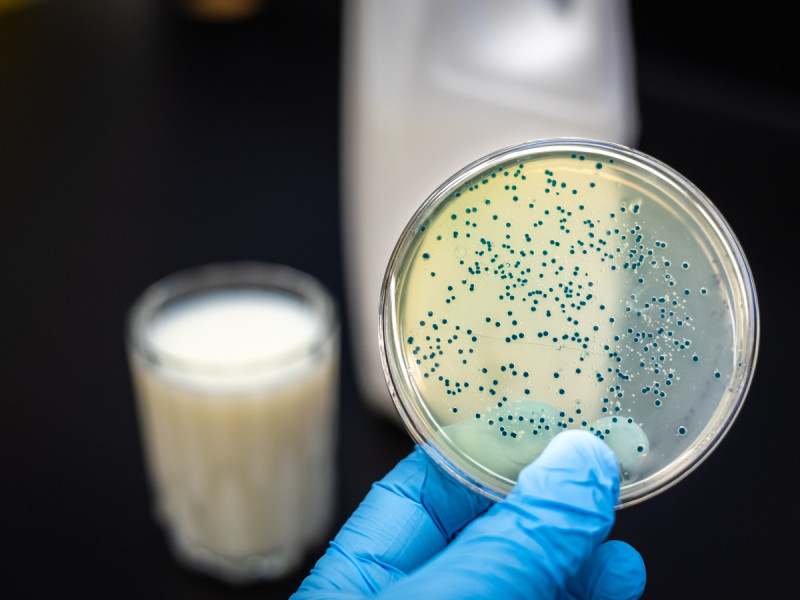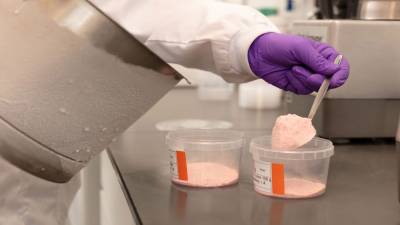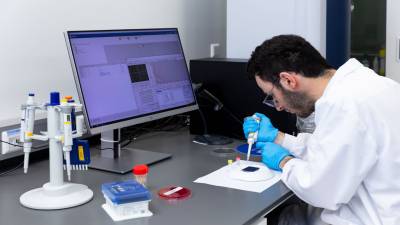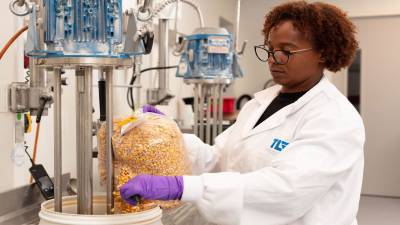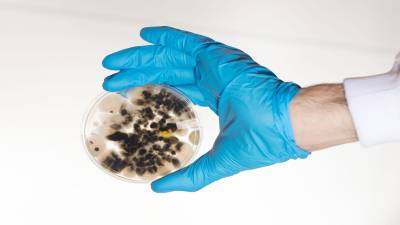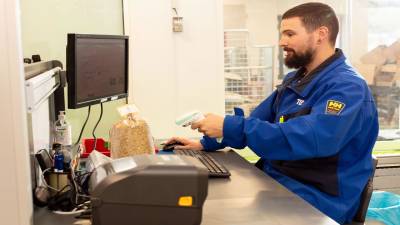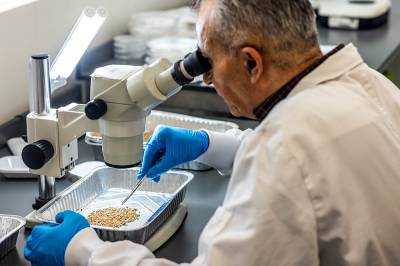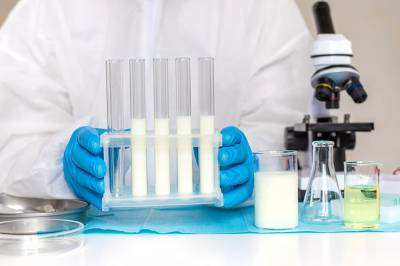Antibiotic Residues in Food and Animal Feed
Legislation, risk analysis and laboratory control.
Application and risks
Within the food production chain, antibiotics have primarily been used in livestock farming. Originally intended for infection treatment and prevention, their use within the EU is now strictly regulated due to concerns over antimicrobial resistance (AMR). Residues in food products pose a public health risk, especially when exceeding legal limits.
European regulation: ban on preventive use
Since 2022, strict rules apply within the European Union:
- Regulation (EU) 2019/6
Prohibits group-wide, preventive use of antibiotics in animals. - Regulation (EU) 2019/4
Specifies that medicated feed may only be supplied on veterinary prescription. - Regulation (EU) 37/2010
Sets Maximum Residue Limits (MRLs) for pharmacologically active substances in products of animal origin.
Substance | Matrix | MRL |
Tetracycline | Milk | 100 µg/kg |
Enrofloxacin | Beef | 100 µg/kg |
Sulfamethazine | Eggs | Not permitted |
Additionally, Regulations (EC) 178/2002, 183/2005 and 767/2009 apply to traceability, hygiene and labelling.
Monitoring and incidents
According to NVWA monitoring reports (2023), 2.6% of 2,800 analysed samples contained antibiotic residues. Violations were mainly found in imported honey (chloramphenicol) and egg products from outside the EU.
Case study
In 2022, a Brazilian shipment of chicken breast was found to contain 187 µg/kg of sulfadiazine (MRL = 100 µg/kg). The shipment was blocked and withdrawn from the market.
Laboratory control: from screening to confirmation
TLR conducts antibiotic residue testing in accordance with ISO 17025 (RvA L059). Methodical distinction:
- Screening:
Microbial inhibition (four-plate test), ELISA. - Confirmation:
LC-MS/MS for molecule-specific identification and quantification relative to MRL.
Risks to food safety
Food products may contain residues due to failure to observe withdrawal periods or through cross-contamination. Relevant risks include:
- Allergic reactions in sensitive consumers.
- Transfer of resistant bacteria or genes.
- Disruption of gut flora with chronic exposure.
Strict compliance with withdrawal periods and laboratory testing is required to minimise these risks.
Animal feed sector: from risk to assurance
Antimicrobial substances are only permitted in medicinal feeds. Risk management within the sector is achieved through:
- GMP+ FSA certification:
Mandatory monitoring for banned substances and cross-contamination. - SecureFeed control:
Risk-based oversight of carry-over between production batches. - Manure testing:
Can detect trace residues that may trigger further investigation.
Note: this method is indicative and serves as a warning, not direct proof.
Case study
In 2021, tylosin was detected in returned feed for broiler chickens. Analysis showed contamination after batch change. Since then, flushing cleaning has been made mandatory for medicinal product lines.
Risk assessment and follow-up
In the event of proven exceedance:
- RIVM or NVWA conducts a risk assessment based on the ADI (Acceptable Daily Intake).
- The batch concerned is blocked.
- Counter-analysis is mandatory.
Conclusion
Antibiotic residues are legally limited, analytically detectable and technically manageable within the supply chain. TLR supports producers with ISO/IEC 17025-accredited analyses, validated LC-MS/MS methods and sector-specific reporting. Systematic monitoring via GMP+, SecureFeed and NVWA remains essential to safeguard food safety, market access and consumer trust. The relevant analytical methods for antibiotic residues fall within TLR's current RvA accreditation (L059, valid until 01-02-2028) as recorded in the accreditation scope.
Meld je aan voor de laatste tips en adviezen dat je gelijk in de praktijk kunt brengen.

